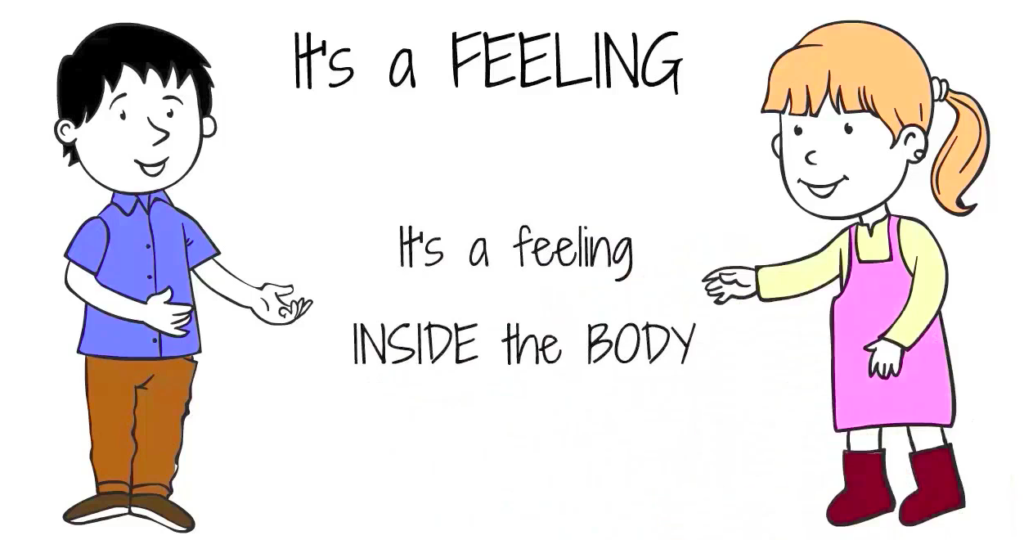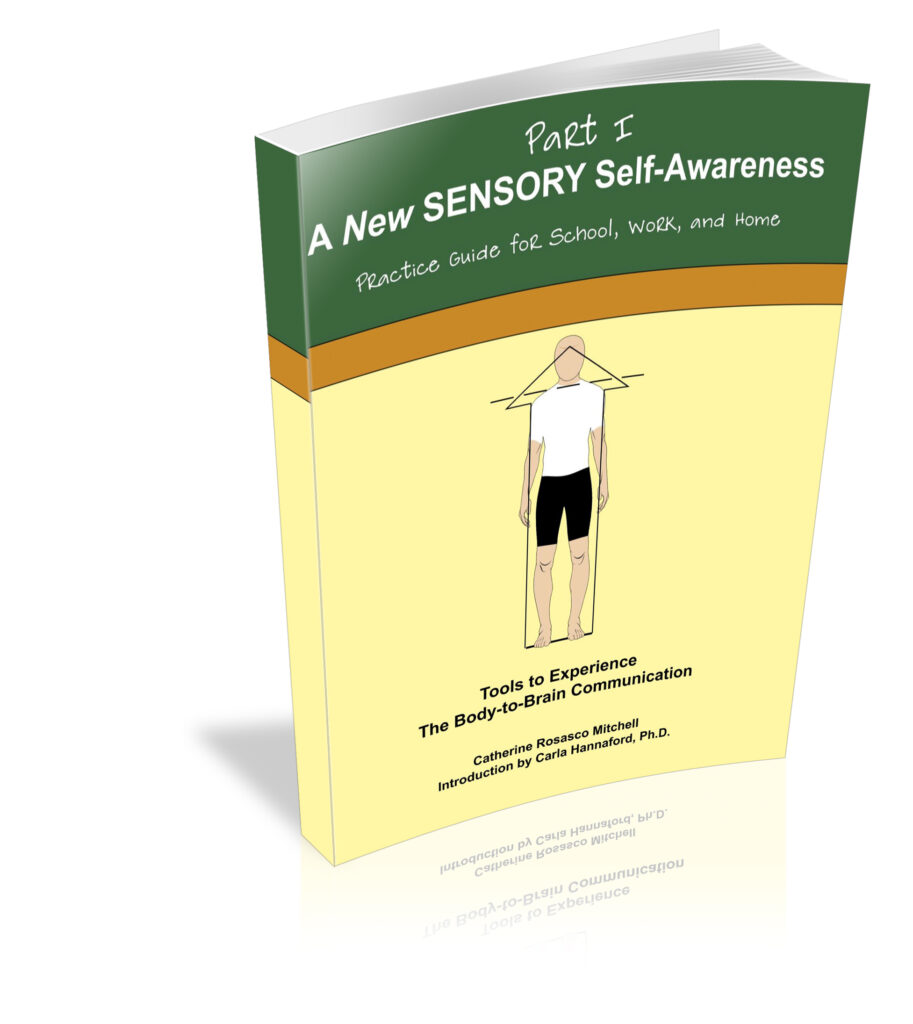
For Schools & Educational Elementary Teachers
___________________________________
Includes:

GET SENSATIONAL ATTENTION (GSA) A school-wide animation video program
THE BOOK
Part I, A New SENSORY Self Awareness
Age 5-10 years old
_________________________________________________________________________
Get Sensational Attention (GSA)
Animation Video Program for Elementary Schools
For the GSA program, an adult needs to teach the program. Teachers for GSA need to adapt writing lessons in the User Guide to the grade level participants.
Why the GSA Program is Important Now
In this age of technology rising, the Sensory Body (SB) must be prioritized in education. As children devote more and more time to computers, they are at risk of losing the essential sense of physical presence that grounds them. Without this crucial understanding of their three-dimensional selves, other areas of their development will inevitably falter. It’s imperative that we address this issue before it becomes a larger problem. The GSA program is an introductory program to learning the SB.
About GSA click ->
Who, What
With the help of Principal Garcia, Catherine Rosasco Mitchell created the GSA program for children to explore beyond the traditional five senses, referred to as the Sensory Body (SB). Each WTM lesson—through animation videos, insightful short writings, and application —fosters clarity from the body’s innate intelligence, a silent reservoir of wisdom from both heart and mind.
This remarkable intelligence can seamlessly integrate into any school-wide initiative, curriculum, or playground environment. (Contact us for more information on how.) By designing attention to notice sensory experiences, we can help them illuminate and process emotional, mental, and behavioral responses, transforming their connections with their selves and the world around us.
How
Woven throughout the body is a matrix of motion that helps develop cognition. Movement and sensations help guide the blindness to hidden insights, enabling access to the differences between innate intelligence and self-generated intelligence. Physical conversations of sensations are part of the encampment of perception. Being trapped in the fire of habit or recurring cycles of behavior is not always just psychological. What lies between sensation and reasoning is a gateway to material nature.
Perceptions change according to how the SB is operating. If the child can sense the innate intelligence of an action within form, they use more of them to make choices. Adults can become trapped in what they have already learned. With children, your efforts to help them sense more of themselves will lead to healthier solutions in the long term. Medication or other temporary relief modalities are often viewed as the only solution. However, the entirety of the self and a child’s actions is a body-mind process. Learning where and how they learn and obtain knowledge requires self-inquiry.
If a child searches, they will find a treasure. The real treasure of the Sensory Body (SB) lies between the opposites, and making space to find unity. Words cannot describe the process. Experience, with awareness of oppositions, is within one’s inner and outer worlds, or between the body and the head. For those who undertake self-inquiry of the SB, another way of thinking is available from the heart. When children learn from the SB, they become kinder and more patient.
Adaptive
The lessons are designed to be flexible and alive. Change them based on your children’s actions. As every good teacher knows, use children’s spontaneous reactions and adjust the course curriculum to the flow of those moments. The same goes for the SB. To get ideas on how to adapt the SB, look at the book A New SENSORY Self Awareness, specifically why movement sequences are designed the way they are.
To understand some of the science behind the SB, refer to the Scientist page and the research on “Body Ownership.”
Congratulations if you have read this far! Here’s why…
There is a short, precious time as a child that helps learn the Sensory Body (SB). It will change their life trajectories and improve as they age. From teenagers to older adults, it becomes crucial.
With support children can learn to sense the silent mental and emotional conversations in their physical structures. The guidance of these conversations is key to their success or failure in the choices they make. The awareness of the SB is taught through movement, specifically, a Feldenkrais® method called, “Awareness Through Movement® (ATM).”
Treasures from the Guidance of the Sensory Body (SB) click ->
Sensations of the body influence attention span and character of behavior. As a result, when children begin to learn, they do so through their body’s sensations. A child learns from the whole to its parts. Sensations know the changes in attention, emotions, and thoughts. Learning the SB helps children learn to feel inside to help share what is going on for them. The feeling of the Sensory Body is a feeling of compassion that is not just from a thought, but a presence of the whole inside the body.
Compassion to circumstances comes from a place when opposing or challenging circumstances can pause. Attention to the feeling from the body gives thinking time to create a new choice, a space. This space provides rest to problematic behavior. Within the “space,” children move beyond reaction mode and beyond what is familiar. This new possibility is not present initially. However, when compassion becomes available, it opens the heart with the mind. The “who” the child identifies with as the self changes. How? The sense of “I” arises from within the atmosphere of the body.
First, adapt WTM to what you, as a teacher, school, or parent, are already doing. For example, Kohala Elementary School adapted the Sensory Body (SB) and the lesson “No Place Like Home Breath” into their school virtues program. They incorporated the Home Breath in their classroom and physical education classes. The principal of the elementary school incorporated the Home Breath with children sent to the office for poor behavior. The WTM Home Breath method became known as the “Pono Breath” at their school. “Pono,” in Hawaiian, means many things, but in this context, let’s say it means Goodness, with a capital “G”. (The breath can be changed to the “HA” sound, instead of the “Home” sound, if that feels better. Both sounds are helpful.)
Make WTM your own because the SB is an organic, spontaneous process for each situation and child. The book will help you understand how to adapt lessons in your school and home. “Adapting” to your school culture and programs is essential for sustainable results. The programs are meant to be adapted to build on what lies between a child’s inner and outer worlds. And the fundamentals of using the Sensory Body require flexibility, from what has already been learned to what still needs to be understood.
Keep Going with GSA!
_____________________________________________________________
The Book

Part I – A New SENSORY Self -Awareness
Ages 5-10 years old (and beneficial for any age young at heart)
12 simple yet essential movement lessons & tips for groups of children
Dive into feeling the Sensory Body with movement games lessons
Foundational lessons to learn from the guidance of the Sensory Body (SB)
Note: While teaching from the Sensory Body, make sure children do not engage in any movements that cause discomfort in the muscular skeletal systems. In the Sensory Body, children would never experience pain, discomfort, or strain.
Focus on doing less, smaller movements, and having fun.
